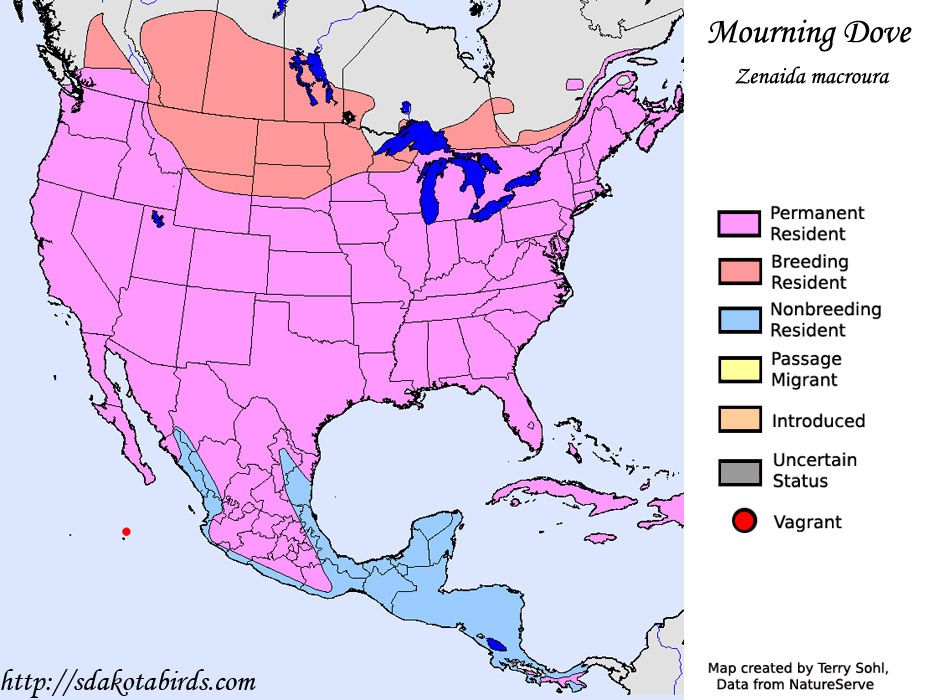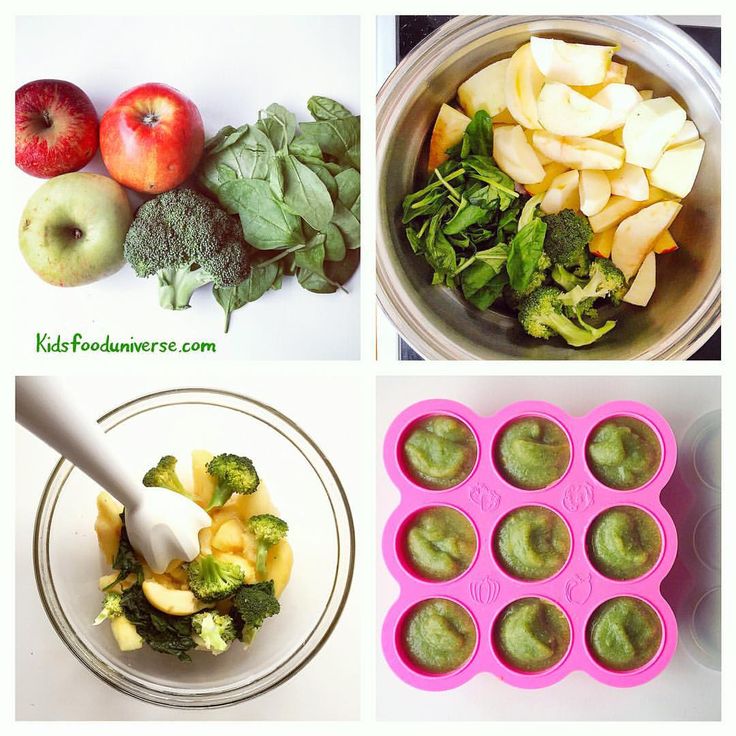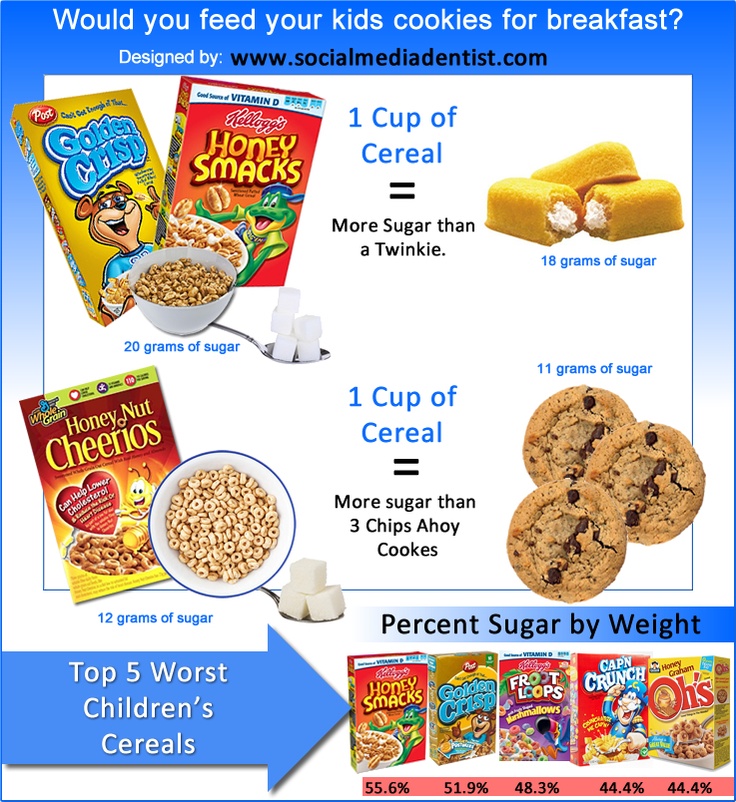Feeding baby cold breast milk bottle
Can Babies Drink Cold Milk?
Caring for babies means keeping them warm and cozy. While you might enjoy a nice, cold glass of something while doing so, cold bottles just don’t seem to fit into this picture!
So, when you were adding items to your baby wish list, you may have been tempted to include that fancy bottle warmer. After all, who wants to spend precious time in the middle of the night trying to warm up milk?
What if we told you, though, that you might not even need to warm up your baby’s milk? Or that there may even be downsides to warming up your little one’s beverage? Keep reading to get the low down on the temperature of your baby’s bottle!
Believe it or not, yes — babies can drink cold milk. Many parents choose to heat up their baby’s milk, but this is mainly done based on the parent or baby’s preference and not for health reasons. (More info on that to come!)
While breastfed babies will get their breast milk from the breast at body temperature, babies who are formula-fed or are taking a bottle of breast milk can drink the contents slightly warmed, at room temperature, or even cold straight from the fridge.
More important than warming the milk is using the right mixture of safe water and formula when making bottles, and storing the formula or breast milk for your baby appropriately.
Beyond that, they can enjoy their beverages slightly warmed — or straight from the refrigerator, making middle-of-the-night feeds a little easier on you!
Before we get ahead of ourselves though, it’s important to stop and note that you should never feed a baby cow’s milk whether it’s warm or cold.
Cow’s milk is not appropriate for children until they are a year of age, so make sure to stick with formula or breast milk until then! (When the term “milk” is used in this article it refers solely to breast milk or formula.)
Yes, it’s safe to feed your baby cold milk.
In fact, frozen breast milk can be used as a form of pain relief for teething babies! (Got a teething little one and curious how to do this? Simply place your breast milk in an ice cube tray. After it freezes, place the breast milk cube in a mesh feeder for your baby to enjoy!)
While many parents choose to warm their baby’s milk, there may actually be more risks to overheating it than having your baby drink it cold.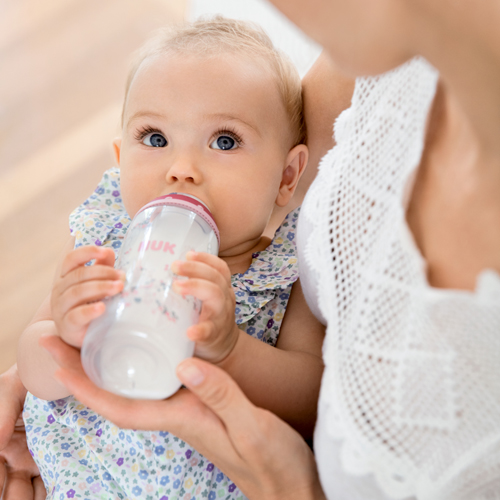
Heated milk concerns
The first concern is using the microwave. You should never microwave cold breast milk or formula as this can leave hot spots.
Because microwaves do not heat evenly, even if you test the bottle temperature on your wrist your baby could still get their mouth and esophagus burned by hot milk.
Since the microwave is out, the most common methods for heating breast milk are a bottle warmer or placing the bottle in hot water bath.
However, even when you use a bottle warmer or other heating method to warm your baby’s milk, it’s important to use caution because overheating the milk can destroy the immune building and other nutritional benefits to breast milk.
One study found that bottle warmers, hot water baths, and other warming methods can all cause the breast milk to exceed 80°C (176°F), which is the temperature when many of the beneficial properties disappear. (This is also why microwave heating isn’t recommended; the extreme heat can kill key nutrients quickly.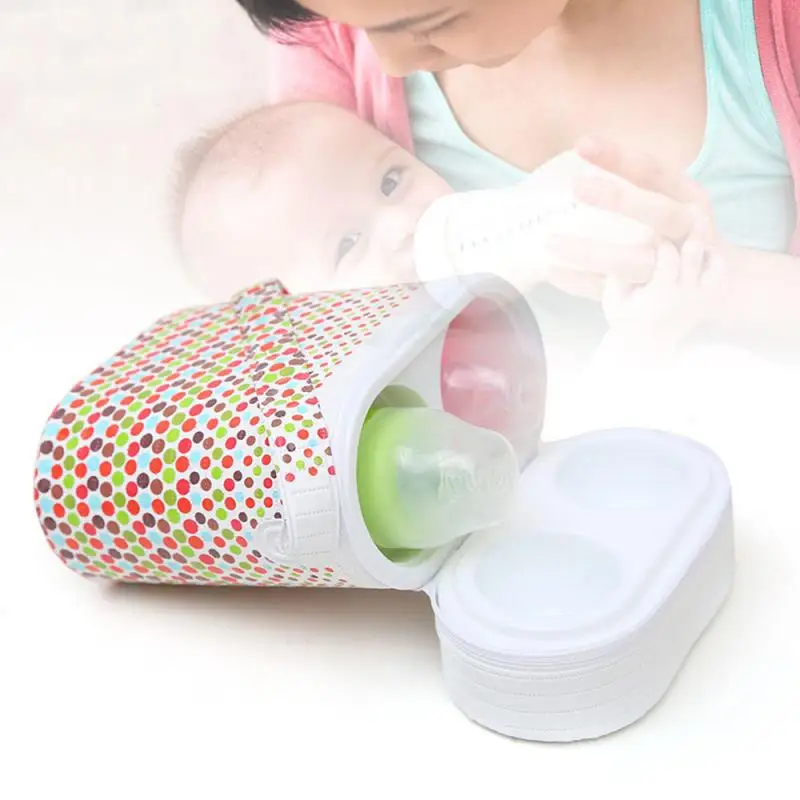 )
)
If you’re heating your baby’s milk, stick with the lower heat settings on your warmer or a warm water bath instead of using boiling water to avoid overheating.
There’s also storage to think about. Milk that has been warmed should not be heated or reheated.
If your little one has not finished their bottle after 2 hours of it sitting out, it’s best to throw it out. This will prevent milk from spoiling or being exposed to environmental germs.
Cold milk concerns
Despite some potential risks in warming milk, it’s important to note that there is at least one group of infants who may experience health benefit from having their milk warmed. These are premature babies.
An older study showed that while the body temperature of the premature baby was not significantly impacted by the milk temperature, warming the liquid did seem to lead to greater tolerance of the milk or formula.
To give your little one the most encouragement for gaining and growing, you can give bottles with cold milk or formula inside a quick dip in a warm water bath to bring the temperature up to lukewarm.
By this point, you’re probably thinking: So why do some people choose to warm milk when it’s more work to do so?
Again, breast milk directly expressed from the breast is a warm temperature. Babies who spend the majority of their feeding sessions at the breast are used to this warm liquid.
While many adjust quickly to a cold version of breast milk coming from a bottle, some babies are a little more sensitive.
This can mean they don’t want to drink as much cold milk. If you’re struggling with a baby who isn’t feeding well, it is a good idea to experiment with the bottle temperature to see if they have a preference.
Many parents also get concerned about the separation of liquids that can occur when breast milk is cold. This layering is normal, and doesn’t affect the milk quality. In fact, the mixture can usually be combined with a few gentle swirls.
However, if it doesn’t mix well, warming it a bit can help to encourage the layers to mix better.
If you’re still feeling worried or guilty about giving your baby a cold bottle, you can always slowly transition them. Each time you serve up a warm bottle, heat it a little less. You can see how your little one responds over time and find the temperature that works best for both of you.
Each time you serve up a warm bottle, heat it a little less. You can see how your little one responds over time and find the temperature that works best for both of you.
Most of the time warming your baby’s bottle really comes down to personal preference and not health requirements (unless you have a preemie and the NICU has a close eye on the milk temperature).
If you do decide that you want to warm your breast milk or formula, you’ll want to do it safely. This means not overheating or microwaving it. It also means testing the temperature before offering it to your baby.
So, this just leaves one question for you to answer: Does that fancy bottle warmer make it onto your registry?!?
Can babies drink cold milk? (And What to do if They Want it Warm) – The Baby's Brew
As a parent of an infant, you spend a lot of time getting things just right for your little one. You want to give them the best loving care possible while making sure the choices you make for them are safe.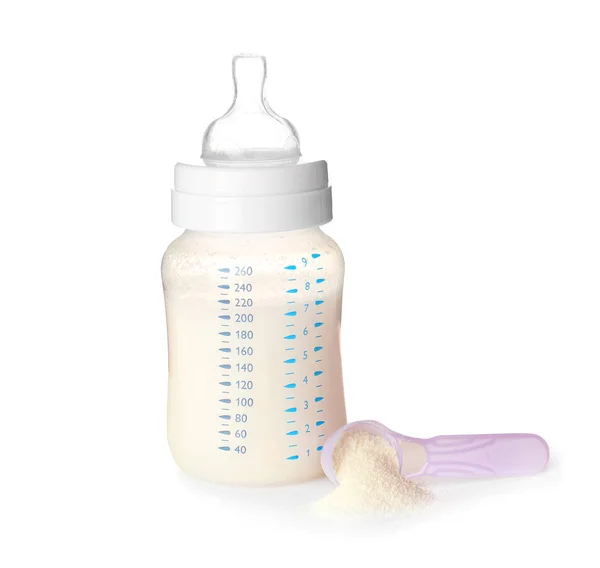 Because you spend so much time feeding your new baby, you likely have many questions about this topic, including if it’s safe for your baby to drink cold milk.
Because you spend so much time feeding your new baby, you likely have many questions about this topic, including if it’s safe for your baby to drink cold milk.
Babies can safely drink cold breastmilk or formula. For healthy, full-term babies, you don’t need to be concerned about giving your baby a bottle straight from the refrigerator or mixing formula with cold water. However, you may find that your baby won’t take the cold bottle of milk if they are used to being fed warm milk.
Though a cold bottle of milk will not hurt your baby in any way, you many run into issues trying to get them to drink it. If you already gave your baby a cold bottle of milk and you’re now feeling worried about that choice, don’t be! Your baby will be just fine. But if you’re considering skipping the bottle warming process (anything to simplify your parenting, right?!), this may or may not be a good plan. Here we’ll cover the pros and cons of giving your baby cold breastmilk or formula, and the best ways to warm a bottle if you choose to go that route instead.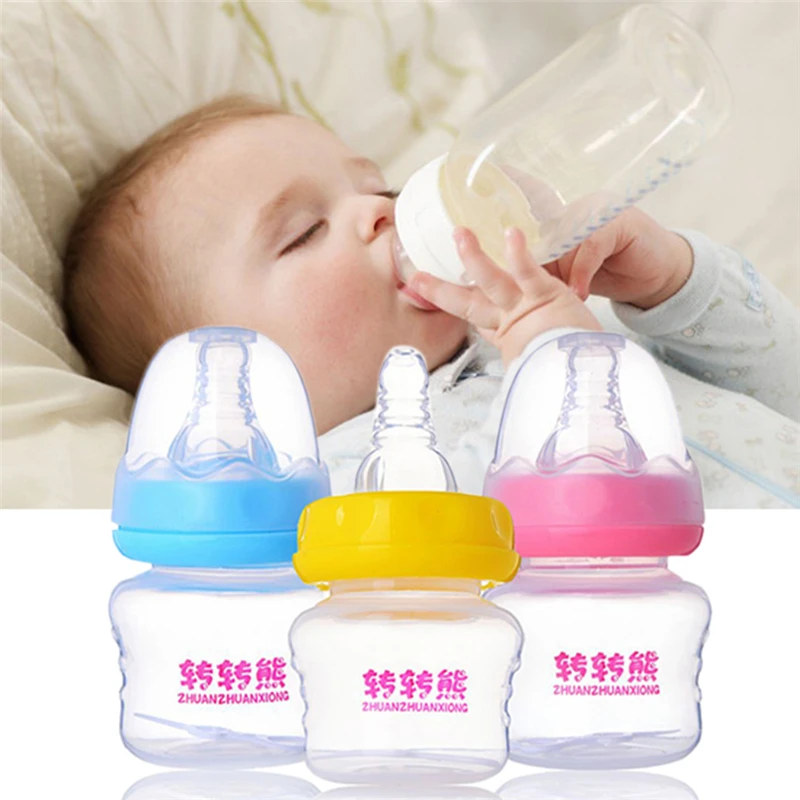
When determining what is and what isn’t safe for a baby, consulting with your doctor, the CDC, and the AAP are great places to get those questions answered. These are trusted sources of reliable information that help parents make the best choices for their babies. Which is why we found it important to share this from the CDC:
“Breast milk does not need to be warmed. It can be served at room temperature or cold.”
This statement makes it clear that cold temperature milk is fine to give to your baby and that safety is not a concern. However, that doesn’t mean that your baby will drink the cold milk that you try to give them. If you haven’t noticed yet, your baby has preferences and she will surely make these known!
So now that you know that giving your baby cold milk is safe (which is most important), let’s discuss what can be good about give your baby cold milk and what may make you reconsider that choice.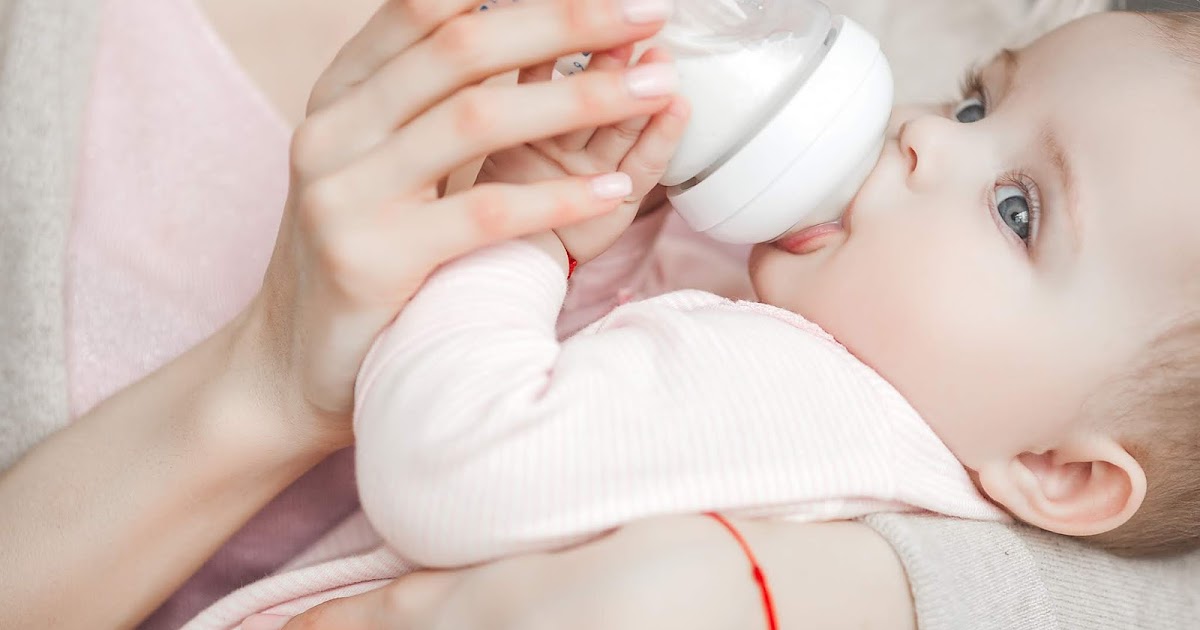
*Keep in mind that throughout this article that when we use the word “milk” it’s in reference to either breastmilk or formula. Infants cannot have regular milk until the age of one.
Pros of Giving Your Baby Cold Breastmilk or FormulaThere are definitely some reasons why giving your baby a cold bottle of milk might be the choice you want to make. Here are the top 3 reasons you might give it a try.
1.) Giving cold milk is faster.
Even though warming milk really doesn’t take very long at all, when you multiply that by the number of feeds your baby has each day, the time adds up. Pouring milk into a bottle straight from the fridge means you have one less thing to do to get it ready.
2.) You don’t risk overheating the milk.
Coming up we’ll discuss the best ways to heat a bottle if you choose to go that route as well what you want to avoid in that process. Care needs to be taken when warming a bottle to do it safely while also preserving its nutrients if serving breastmilk.![]() When done incorrectly, you can overheat the milk which can create dangerous hot spots and destroy the healing antibodies of breastmilk.
When done incorrectly, you can overheat the milk which can create dangerous hot spots and destroy the healing antibodies of breastmilk.
By choosing to give your baby a cold bottle of milk, you’ll always know that your baby is being fed in a safe manner.
It makes travel easier.
You probably already know that leaving the house with a baby can be quite the endeavor. Having to feed a baby on the go can make it even harder. You have to get your baby’s bottle(s) prepped and stored correctly before leaving the house and then you have to figure out when and how you’re going to feed your baby while out and about. Not having to heat a bottle can make things easier - especially if you’re planning to ask a server for a bowl of warm water or thinking you’ll just run the bottle under some warm water in the bathroom.
It can be messy and time-consuming (though we do have a much better portable warming solution which we’ll talk about below.) If your baby will take a cold bottle of milk on the go, this makes your life a lot easier while traveling.
Sounds great, right?!
These pros might be enough to convince you to try to give your baby a cold bottle to see what happens. You may find that your baby takes it without a fuss and there’s no reason you wouldn’t go forward with cold bottles. Some babies are just more easy-going, and if this is the situation you’re in, that’s awesome!
But if your baby won’t take the cold milk, well then, none of these pros matters. When I had my first baby I definitely had the thought, “I don’t need to waste time warming milk. My baby will go with whatever I give her!” Well after breastfeeding exclusively for several months, I was in for a rude awakening when I tried to give her an unwarmed bottle of breastmilk. Even if the “ease factor” of giving cold milk is enticing, it may not work out if your baby refuses to take the bottle that way.
Cons of Giving Your Baby Cold Breastmilk or Formula
We all want one less thing to have to hassle with as new parents. It’s an incredibly busy time impacted by the least amount of sleep you’ve probably known, so creating a routine with less steps is ideal. But, skipping the warming step of your baby’s milk might not work out the way you think it will. Though giving cold milk to your baby is safe, it still may not be the best choice.
It’s an incredibly busy time impacted by the least amount of sleep you’ve probably known, so creating a routine with less steps is ideal. But, skipping the warming step of your baby’s milk might not work out the way you think it will. Though giving cold milk to your baby is safe, it still may not be the best choice.
Honestly this is the number one thing you’ll probably run into trying to give your baby cold breastmilk or formula. As your baby initially takes the bottle, there’s a good chance you’ll be met with milk all over your baby’s face when she realizes it’s cold, followed by crying and a refusal to drink anymore. There is an especially high chance of this if your baby has always been fed warm milk previously - whether by breast or bottle. The chill of cold liquid can be shocking to your baby, and it just doesn’t feel as good going down.
Will your baby take it eventually? Perhaps. But you also may run into this scenario every time going forward, making feeding time something neither of you are able to look forward to.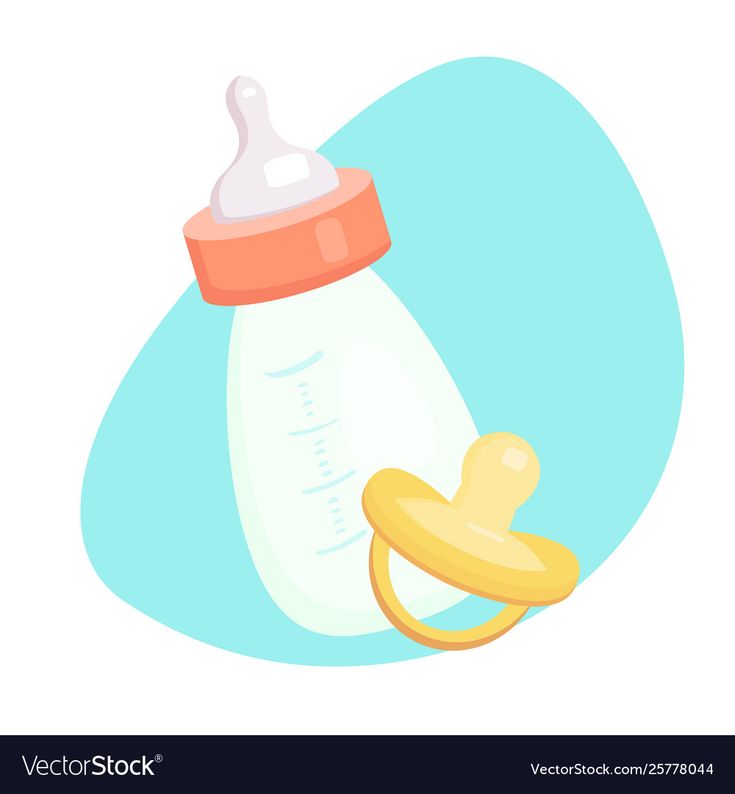
2.) Cold milk may not be the optimal choice for preemies.
If you have a term infant, there is nothing unsafe about giving your baby milk that comes straight from the fridge. For preemies, it is considered best to warm milk prior to feeding. According to Medela, it is normal practice for nurses to warm baby bottles before giving them to the babies in the NICU. They write, “For a very low birthweight infant, feeding of cold milk may lead to changes in body temperature.” The Human Milk Banking Association also advocates for milk warming.
However, there isn’t any verified evidence to say that giving cold breastmilk or formula to premature infants is harmful, so this is something that would be good to discuss with your baby's pediatrician.
3.) It can be difficult to mix a cold bottle of breastmilk.
Unlike formula, breast milk separates when refrigerated. You will see the fat layer sitting on top with a more watery portion on the bottom. When pulling a bottle of breastmilk from the fridge and try to shake in order to mix the two layers together, it can be difficult to get all of the thick layer mixed it.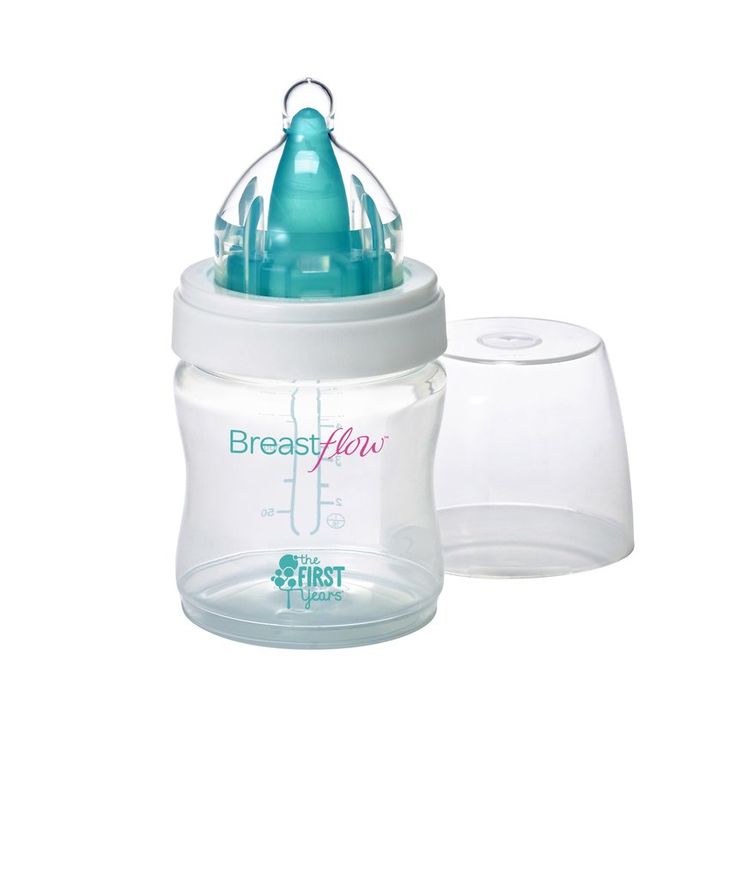 You’ll see much of still stuck to the sides of the bottle. When warmed, however, the bits stuck to the side will come off, making mixing an easier process.
You’ll see much of still stuck to the sides of the bottle. When warmed, however, the bits stuck to the side will come off, making mixing an easier process.
There may be times when you have no other option than to give your baby cold milk. Perhaps you’re traveling and don’t have a travel bottle warmer or a way to stop and run it under warm water. In this case, your baby will probably eventually take the bottle if they initially don’t want it. But what if you could avoid all that?
Opting to Warm Your Baby’s BottleBy now you’re probably realizing that maybe your idea of giving your baby a cold bottle could backfire. So if you do want to go ahead and try it, we suggest doing so at home where you have the option to warm in a bowl of warm water if you need to. It will only take a feeding or two to determine if your baby is going to accept it or not.
So what are you to do if your baby won’t take the cold bottle?Some babies just want the comfort that warm milk provides.![]() You could warm it in a bowl of warm water or run it under warm water until the milk inside the bottle turns warm. (Placing a few drops on your wrist will help you determine if it’s the right temperature.) You can find out more about this in our article, “How to Safely and Effectively Warm a Baby Bottle.”
You could warm it in a bowl of warm water or run it under warm water until the milk inside the bottle turns warm. (Placing a few drops on your wrist will help you determine if it’s the right temperature.) You can find out more about this in our article, “How to Safely and Effectively Warm a Baby Bottle.”
But there’s a better solution. And that’s to get the best portable bottle warmer there is - The Baby’s Brew. It’s the only battery-operated bottle warmer that can warm your baby’s bottle to the exact temperature your baby desires. If you go between breastfeeding and giving bottles of breastmilk, you’ll want to choose the 98.6 degree temperature setting so that it’s what your baby is used to. If you’re giving your baby formula, you may choose one of the temperatures above 100 degrees. Every temperature option on the Baby's Brew is safe and exact.
This takes away the hassle that typically comes with warming a bottle while ensuring that your baby’s milk is never overheated. It's simple to use and keeps a charge for up to 12 hours, meaning you can warm bottles for your baby all day long.
If your baby will take a cold bottle of milk, it’s safe to give it to them that way. But if you have a baby who clearly wants their milk warm, the easiest and best way to go about it is by using the Baby’s Brew. Great for home and travel, it will make feeding time less stressful and more enjoyable for both of you.
Feeding with expressed milk | breastfeeding
When can I start breastfeeding my baby with expressed breast milk? How to do it right? Is it worth worrying that the child will confuse the pacifier with the breast? In this article we will answer your questions.
Share this information
When can I start breastfeeding my baby?
If your baby is healthy and breastfeeding well, there is no need to give him expressed milk. For the first four weeks, you work together to start and increase milk production, and your baby also learns to suckle properly at the breast. There is not enough scientific data on this yet, 1 but there is an opinion that bottle feeding in the first month may adversely affect the process of establishing breastfeeding.
There is not enough scientific data on this yet, 1 but there is an opinion that bottle feeding in the first month may adversely affect the process of establishing breastfeeding.
However, if the newborn is unable to latch on or suckle for some reason, start expressing milk as soon as possible after delivery. Read more about this in our articles on coping with problems in the first week, breastfeeding premature babies and babies with special needs, and seeking help from your healthcare provider.
How can I feed my baby with expressed breast milk?
There are many expert feeding solutions that allow you to give your baby expressed milk in a variety of ways, depending on your and your baby's needs.
For example, the innovative Calma smart pacifier only lets milk through when the baby creates a vacuum by suckling. This means that when feeding from a bottle, he will make the same movements with his tongue and jaws as when sucking at the breast. 2.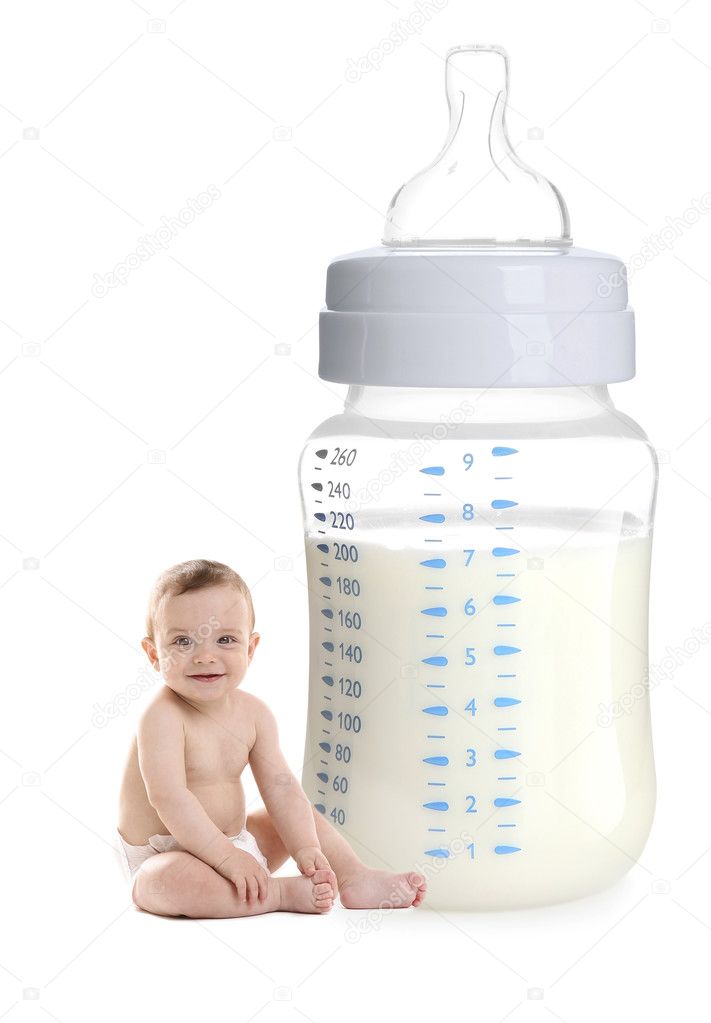 3 Calma was developed with the help of breastfeeding experts from the University of Western Australia. When using this pacifier, the baby can suck, swallow, pause and breathe in the same way as when breastfeeding. 4 Preserving natural sucking habits allows baby to transition easily from breast to bottle and back.
3 Calma was developed with the help of breastfeeding experts from the University of Western Australia. When using this pacifier, the baby can suck, swallow, pause and breathe in the same way as when breastfeeding. 4 Preserving natural sucking habits allows baby to transition easily from breast to bottle and back.
In addition, Medela also offers regular bottle teats* in two versions that produce milk at different rates. All Medela* nipples can be placed directly on bottles used for expressing milk, minimizing the risk of spillage.
If you need to feed your baby with expressed milk, but you do not want to bottle feed him until he is learning to breastfeed, you can use a sippy cup* for temporary feeding. The baby will be able to drink milk from such a mug, but you should be careful not to spill the milk. For the first time, it is advisable to feed the child from a drinking cup under the supervision of the attending physician in order to learn how to do it correctly.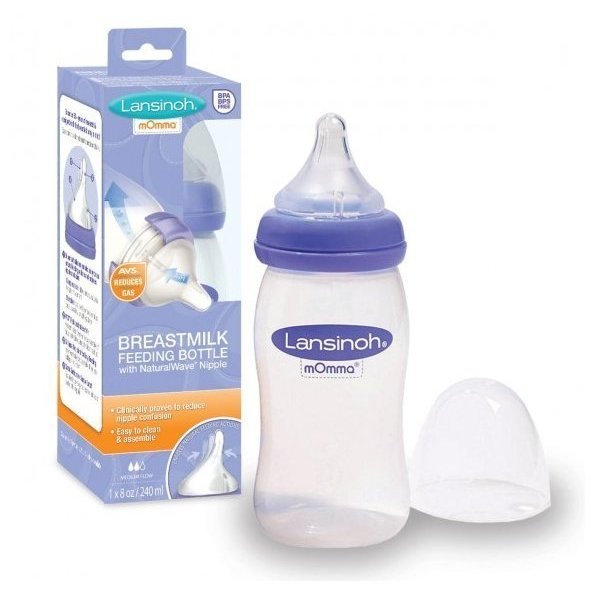
If your baby needs to be supplemented with expressed milk in addition to regular breastfeeding, the Supplementary Feeding System (SNS)* can be used. It is equipped with a thin, flexible capillary that can be clipped close to the nipple to give your baby expressed milk while breastfeeding. Thanks to this, the baby suckles the breast for longer, thereby developing sucking skills and stimulating the production of milk from the mother. This can be helpful when there is a shortage of breast milk, as well as when feeding adopted or surrogate children.
If the baby is unable to breastfeed because he is too weak or has a congenital disease, you can use the Special Needs Cup*, which releases milk with gentle pressure, making it suitable for feeding these babies.
How to teach a child to bottle feed?
If breastfeeding is going well and you decide to start bottle feeding your baby with expressed breast milk, follow these guidelines.
Start early and take your time
Don't wait until the first day of work or the first time you leave the house to start bottle feeding your baby.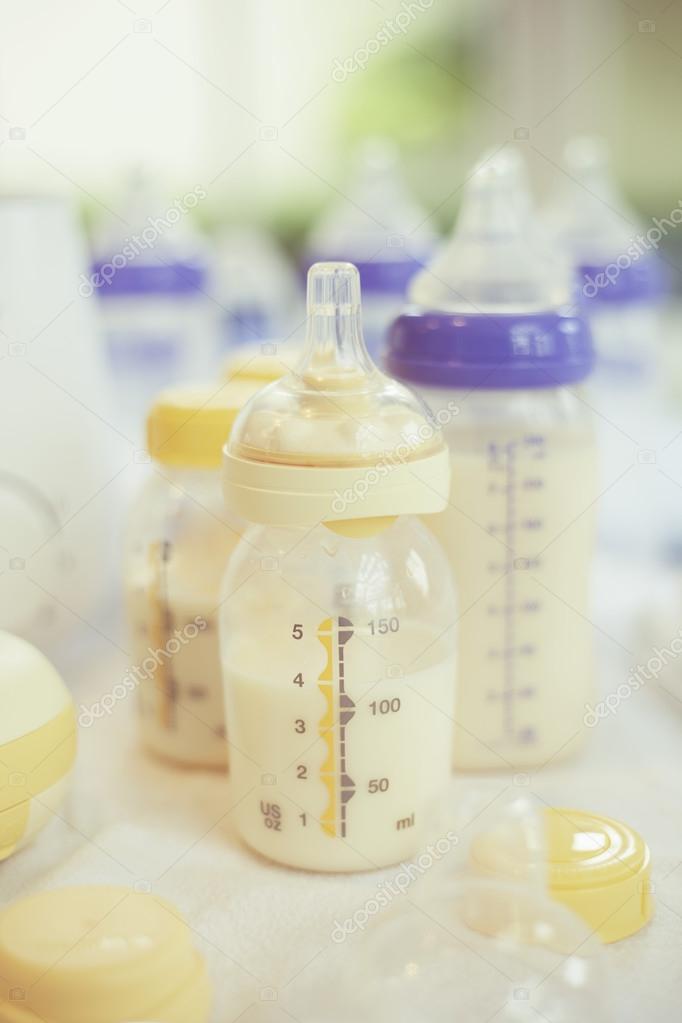 Start accustoming your baby to small portions of expressed milk a couple of weeks before the desired date, calmly and without haste. Gradually build up to one full serving of pumped milk from a bottle.
Start accustoming your baby to small portions of expressed milk a couple of weeks before the desired date, calmly and without haste. Gradually build up to one full serving of pumped milk from a bottle.
Choose a time
Ideally, at the first bottle feeding, the baby should be hungry, but not too hungry - in this state, he is as relaxed as possible.
Let others feed
Your baby is used to feeding from your breast, so when you offer him a bottle it can be confusing. The process can go faster if the first time the baby is bottle-fed by someone else while you are not in the room, so that your sight and smell do not embarrass the baby.
Maintain optimal temperature
Your baby will be more willing to eat expressed milk if the temperature is around 37°C, close to body temperature.
Dip the nipple in milk
Try dipping the nipple in expressed milk before offering it to your baby.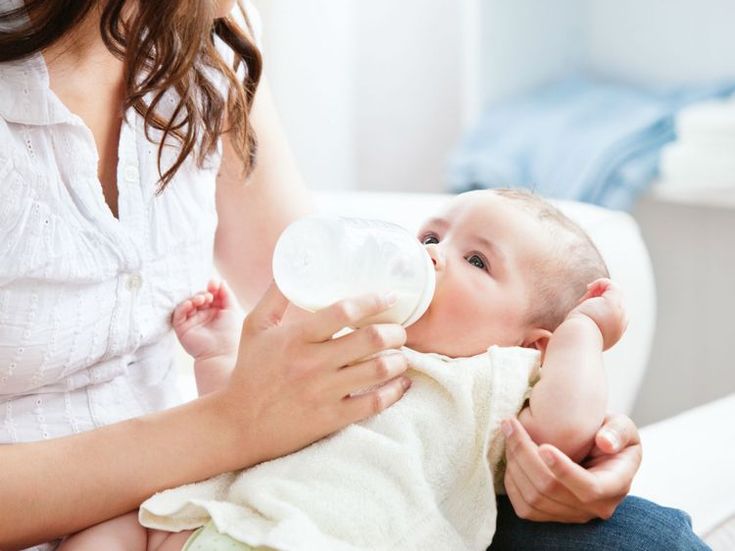 This way it will taste and smell like your breast milk. Lightly touch the baby's upper lip with the nipple to open the mouth.
This way it will taste and smell like your breast milk. Lightly touch the baby's upper lip with the nipple to open the mouth.
Choose the right position for bottle feeding
Feed your baby on demand and keep him reclining during feeding. Never bottle feed your baby when he is lying or sitting, otherwise he may choke. Listen to the wishes of the child - take as many pauses as he needs. You can even try to shift it from one hand to another during feeding.
Be patient
Don't worry if your baby doesn't take the bottle right away - it may take several tries. If he pushes the bottle away or starts crying, calm him down, wait a few minutes and try again. If he still doesn't want to bottle feed, wait a few more minutes and breastfeed him as usual. Repeat the bottle experiment at a different time of day.
How much pumped milk should I give my baby?
All children are different. Research shows that between the ages of one and six months, a baby can consume between 50 and 230 ml of milk per feeding. To start, prepare about 60 ml and observe how much your baby needs - more or less. You will soon realize how much milk he usually eats. Just never force him to finish the cooked portion.
How can I keep my baby safe when bottle feeding?
Always clean and sterilize your pump and bottles according to the manufacturer's instructions. Wash your hands before expressing, pouring milk, and feeding your baby. Follow our instructions for safely storing and thawing your expressed milk.
If breastmilk needs to be warmed, place the bottle or bag in a bowl of warm water or a heater or under running water at a maximum of 37°C. Never heat breast milk in the microwave or on the stove.
Will the baby be able to transition from breast to bottle?
Some mothers worry that if they start bottle feeding too early, the baby will get used to the artificial nipple and not want to breastfeed. Others, on the contrary, are worried that if the child is not immediately accustomed to the bottle, then he will no longer eat from it. In general, in these cases, they say that the child confuses the nipple with the breast.
Experts disagree on whether such confusion is a problem. 1 Without a doubt, it is easier for a baby to suckle milk from a regular bottle with a nipple, which does not require a vacuum, than from the breast, since the milk flows faster, also under the influence of gravity. And some babies really have clear preferences: only the breast or only the nipple. However, many babies are comfortable suckling both the breast and the pacifier.
If you are unable to feed your baby with expressed breast milk, seek help from a lactation consultant or specialist.
Literature
1 Zimmerman E, Thompson K. Clarifying nipple confusion. J. Perinatol. 2015;35(11):895-899. - Zimmerman I., Thompson K., "On the issue of breastfeeding." Zh Perinatol (Journal of Perinatology). 2015;35(11):895-899.
2 Geddes DT et al. Tongue movement and intra-oral vacuum of term infants during breastfeeding and feeding from an experimental teat that released milk under vacuum only.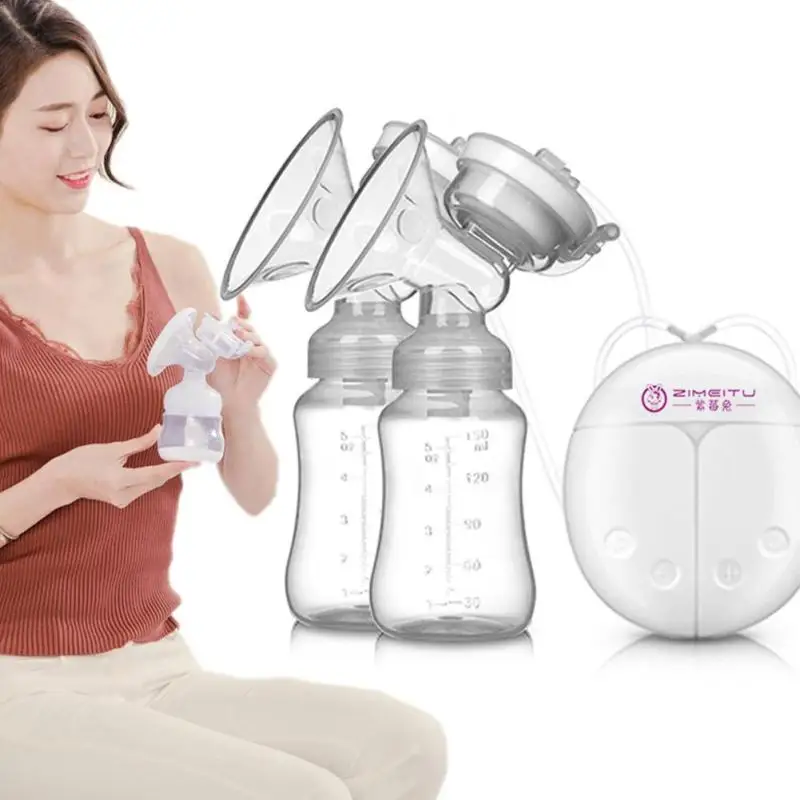 Early Hum Dev . 2012;88(6):443-449. - Geddes D.T. et al., "Language Movements and Oral Vacuum Generation in Term Infants During Breastfeeding and Feeding from an Experimental Vacuum-Delivery Teat". Airlie Hume Dev. 2012;88(6):443-449.
Early Hum Dev . 2012;88(6):443-449. - Geddes D.T. et al., "Language Movements and Oral Vacuum Generation in Term Infants During Breastfeeding and Feeding from an Experimental Vacuum-Delivery Teat". Airlie Hume Dev. 2012;88(6):443-449.
3 Segami Y et al. Perioral movements and sucking pattern during bottle feeding with a novel, experimental teat are similar to breastfeeding. J. Perinatol. 2013;33(4):319-323. - Segami I. et al., "Perioral movements and sucking during bottle feeding with a new experimental nipple are very similar to sucking from the breast." Zh Perinatol (Journal of Perinatology). 2013;33(4):319-323.
4 Sakalidis VS et al. Oxygen saturation and suck-swallow-breathe coordination of term infants during breastfeeding and feeding from a teat releasing milk only with vacuum. Int J Pediatr. 2012;2012:130769. - Sakalidis V. S. et al., "Oxygenation and Coordination of Sucking, Swallowing, and Breathing in the Term Infant During Breastfeeding and Feeding from a Purely Vacuum Teat". Int J Pediatrician 2012;2012:130769.
S. et al., "Oxygenation and Coordination of Sucking, Swallowing, and Breathing in the Term Infant During Breastfeeding and Feeding from a Purely Vacuum Teat". Int J Pediatrician 2012;2012:130769.
Read instructions before use. Consult a specialist about possible contraindications.
* RU № ФСЗ 2010/07353 dated 07/19/2010
we tell you how easy it is to feed a baby with expressed milk
One of the most common arguments people oppose breastfeeding in public is that feeding an infant with expressed milk from a bottle is just as easy, convenient and much less embarrassing than breastfeeding directly from the breast.
Yes, in general bottle-feeding is often seen as an affordable and equal alternative to breastfeeding, which can be used when the mother needs to go away on business or just take a break from the baby. Is it really so? We figured out how to offer a bottle to a baby, and what can go wrong with this.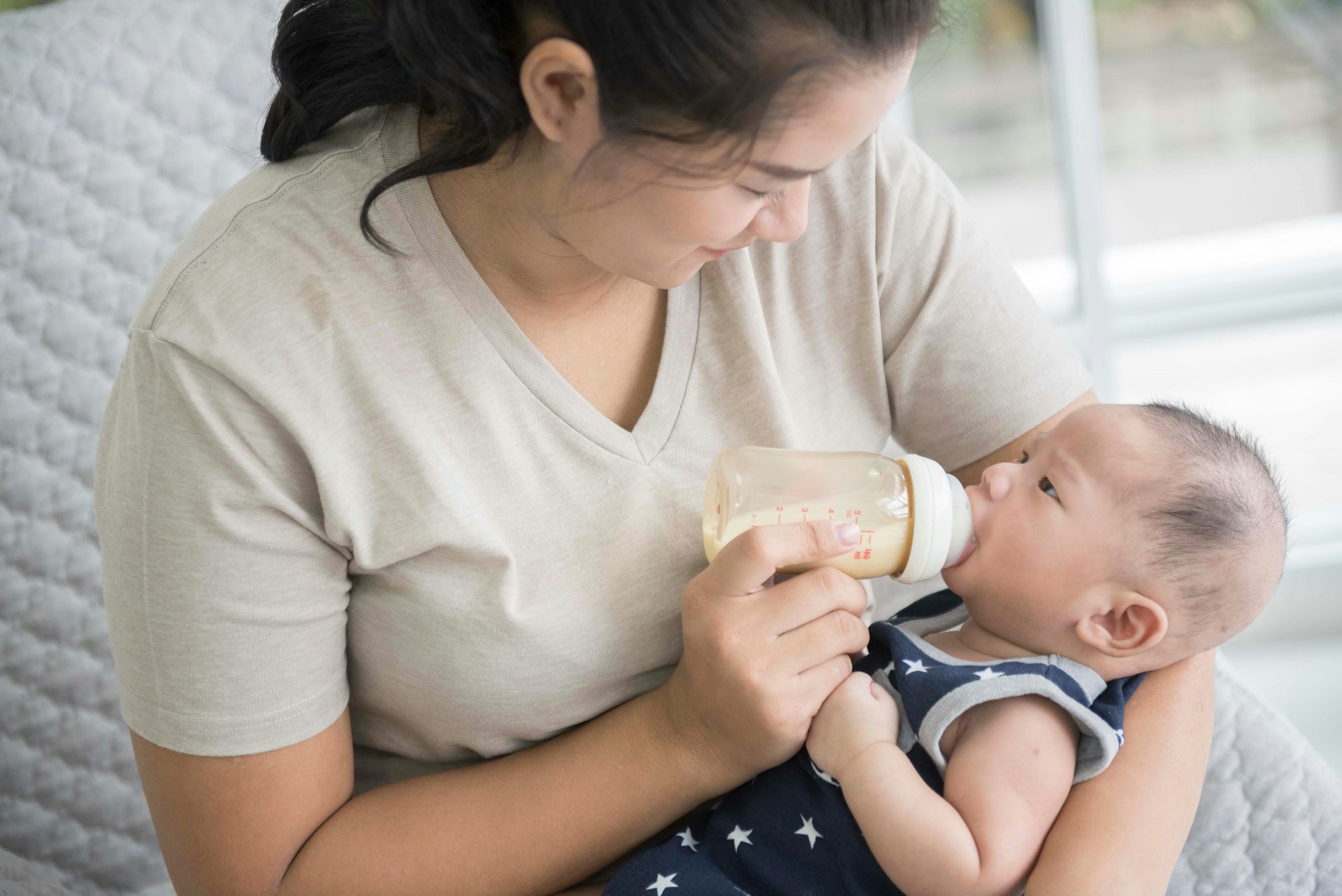
We have repeatedly said that we support any method of infant feeding, as long as it is beneficial for the child and his parents. Any method of feeding has its pros and cons, and choosing the most suitable option (or options) for yourself, it is important to take them into account.
Feeding a baby with expressed milk from a bottle cannot be considered as a complete replacement for breastfeeding, which is suitable for all nursing mothers, and here's why.
This is one of the most obvious problems. Many babies, especially those who are breastfed from birth, simply refuse to take anything other than their mother's breast.
This is the other side of "bottle training" - lactation consultants strongly advise against feeding breastfeeding babies from a bottle with a nipple without good reason, because even if they agree to such a replacement, then they may completely or partially refuse from the chest.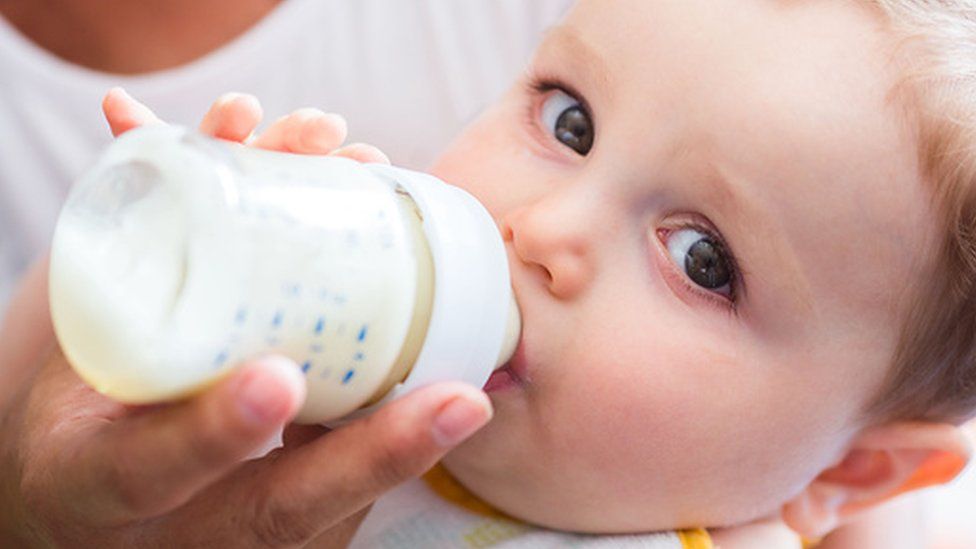
Switching to bottle feeding with a nipple can also negatively affect how the baby latch on. Milk from a bottle flows faster and more forcefully than from a mother's breast, the baby has to put in less effort to obtain it, and the grip required for feeding from a nipple is different from that needed for painless and effective sucking of the mother's breast.
One of the absolute advantages of breastfeeding is the ability to always have milk at the right temperature and in the right volume without any effort.
Feeding a baby with expressed milk requires a lot of things: a breast pump, milk storage and freezing bags, a bottle sterilizer, the nipple bottles themselves, a cooler bag (if you plan to feed your baby outside the home) and a bottle warmer. Yes, you can probably do without something from this list, but you are unlikely to be able to even switch to periodic feeding with expressed milk without special equipment.
Not all women find it easy to express milk, especially if they have to do it on a regular basis. For example, in the United States, only 47 percent of babies are exclusively breastfed during the first three months of life (according to CDC 2017). There are many reasons for this, but a very short decree is one of them.
Expressing milk frequently is hard and time-consuming work, and it can also negatively affect lactation.
If difficulties do not frighten you, and your child does not demonstrate a categorical dislike for the bottle, then this is what lactation experts recommend.
Attempts to bottle-train an infant should begin after they are four weeks old. It is believed that by this time the mother has time to establish lactation, and the child gets used to taking the breast correctly.
The best time to offer a bottle to a baby for the first time is when he is calm, content, and not very hungry—hungry does not help in learning new skills.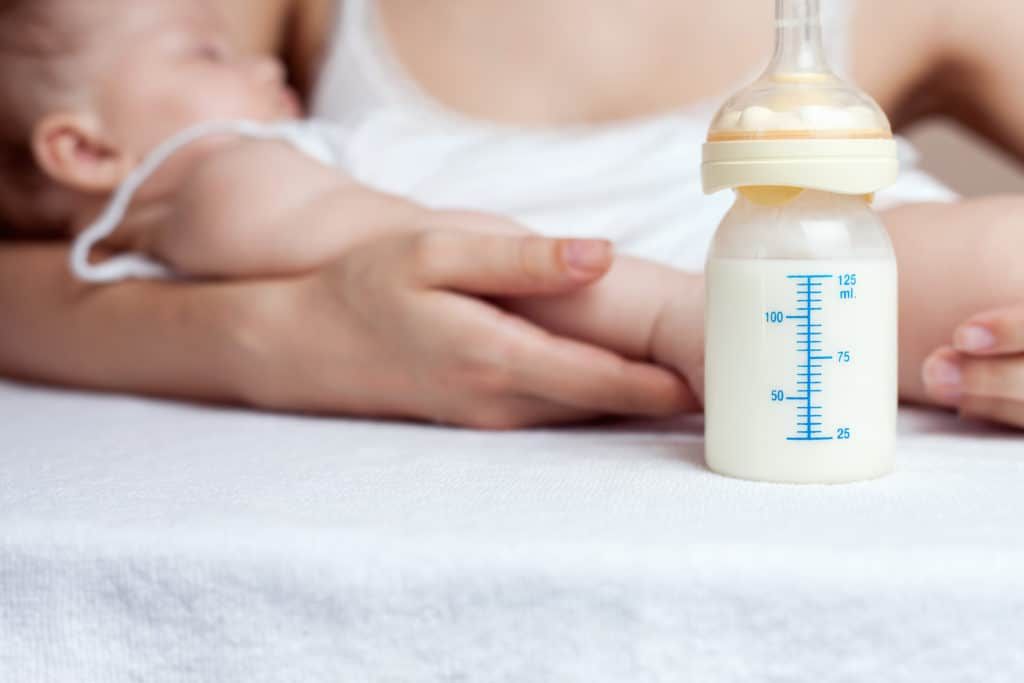 For starters, treat bottle feeding like a game, not like a meal.
For starters, treat bottle feeding like a game, not like a meal.
Despite the fact that babies seem to understand very little, they already know how to recognize people around them and know roughly what to expect from these people. A baby is more likely to take a bottle from a person who has never breastfed than from a mother.
When you bottle feed your baby, do not put him on his back - the milk will flow too fast and the baby may choke or swallow air.
Babies up to six weeks old can be laid slightly on their side, and older babies can be held in a semi-sitting or upright position, while the bottle should be placed horizontally.
To maintain a proper grip, bottle feed your baby the same way you would breastfeed him. First, gently touch the baby's lips with the pacifier so that he reflexively opens his mouth, and then place the pacifier in the baby's mouth. It is important that the baby grabs the nipple completely, and not just the tip - just like he does with the breast.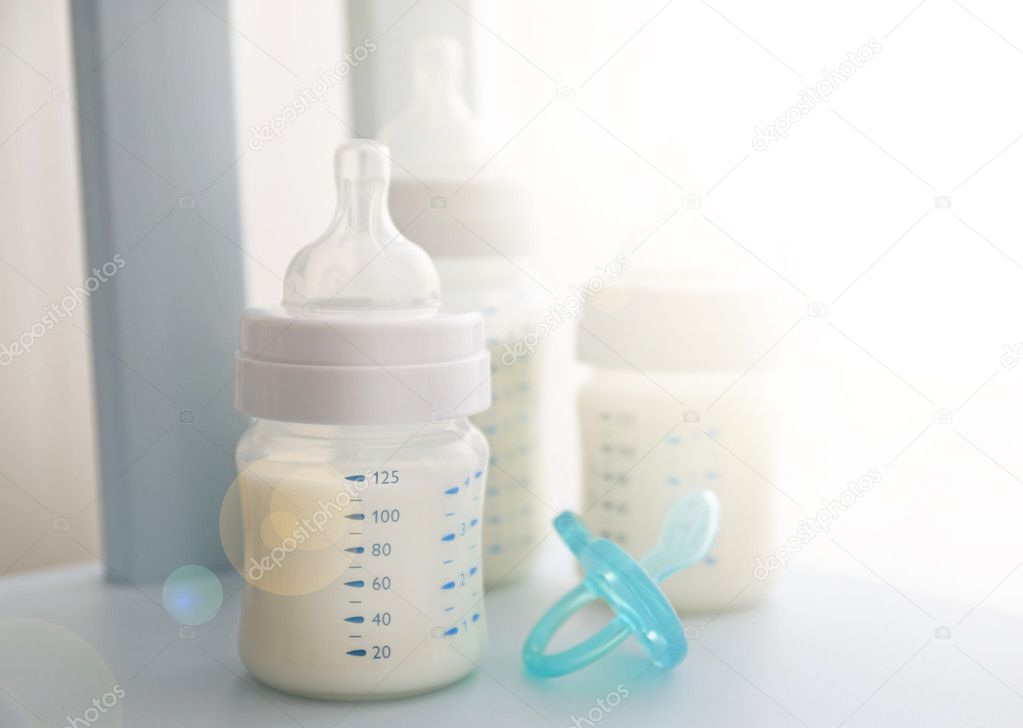
Take small breaks during feeding by tilting the bottle so that milk does not flow out of it - this makes bottle feeding more like breastfeeding, in which the flow of milk is constantly changing its intensity.
As we wrote earlier, not all babies are happy to exchange their mother's breast for a plastic bottle with a nipple.
If the baby is not being fed by the mother, try wrapping the bottle in a piece of clothing that smells like the mother.
Some babies are more likely to take a bottle when they are in close skin-to-skin contact with the person who feeds them.
Other babies may find it more interesting to feed in a position that does not remind them of breastfeeding at all. Take the baby under the chest, sit him down - maybe it will be more pleasant for him to drink milk, looking around.
Try feeding your baby while moving in a rhythmic way: you can walk, rock, sit in a rocking chair, or roll back and forth on a chair with wheels.
Try different types of nipples, since there are a lot of them now, and they differ in size, length, thickness and stiffness.
Try changing the teat temperature. Some babies (for example, those who are teething) will prefer a nipple that has just been taken out of the refrigerator, while others, on the contrary, will enjoy drinking from a nipple that resembles their mother’s breast in temperature (for this you can hold the nipple under warm water).
Try changing the temperature of the milk: your baby may like cool or cold milk more (no, it's not bad).
If your baby doesn't take a bottle on principle, even after you've tried all of these suggestions, you can try feeding him expressed milk from something else. Here are the most common options that breastfeeding consultants offer.
According to the La Leche League experts, even a newborn baby can be fed from a cup, and this process is comparable in time to breastfeeding.




